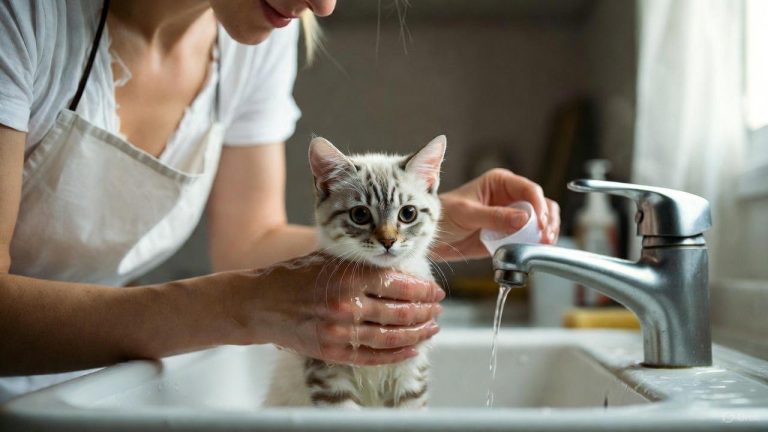How to Sell a Puppy Fast?
Selling a puppy can feel overwhelming when you want to find the right home quickly. Many dog owners face this challenge when their pet has an unexpected litter or when they need to rehome a young dog. The good news is that with the right approach, you can connect your puppy with loving families while ensuring a smooth, fast sale.
This comprehensive guide walks you through proven strategies that help you sell your puppy efficiently without compromising on finding quality homes. From preparing your puppy for sale to closing the deal, these practical steps will accelerate your selling process.
Prepare Your Puppy for Sale
Before you list your puppy anywhere, proper preparation sets the foundation for a quick sale. Clean, healthy, and well-socialized puppies attract buyers immediately and command better prices.
Start with a thorough veterinary checkup. Potential buyers want assurance that they’re getting a healthy puppy. Schedule vaccinations, deworming treatments, and any necessary health screenings. Keep all medical records organized in a folder that you can show to interested buyers.
Grooming makes a significant difference in first impressions. Bathe your puppy with gentle dog shampoo, trim their nails, and brush their coat until it shines. Clean ears and bright eyes signal good health to potential owners.
Socialization helps puppies adapt to new environments faster. Expose your puppy to different sounds, people, and gentle handling. Well-socialized puppies appear more confident and appealing to families with children.
Create a clean, comfortable space where you’ll meet potential buyers. A tidy area with the puppy’s toys, blankets, and food bowls shows you’ve cared for the animal properly. This environment helps buyers envision the puppy in their own homes.
Set the Right Price for Quick Sales
Pricing strategy directly impacts how fast your puppy sells. Research similar puppies in your area to understand current market rates. Check local classified ads, pet stores, and breeder websites to establish a competitive baseline.
Consider your puppy’s breed, age, and unique qualities when setting the price. Purebred puppies with papers typically sell for more than mixed breeds. However, designer mixes like goldendoodles or labradoodles often command premium prices due to their popularity.
Factor in your puppy’s training level. House-trained puppies or those who know basic commands justify higher prices. Document any training progress with photos or videos that demonstrate the puppy’s skills.
Be realistic about your timeline versus profit goals. If speed matters more than maximum profit, price your puppy slightly below market average. This strategy generates more inquiries and faster sales while still ensuring fair compensation.
Consider offering package deals that include the puppy’s current food, toys, bed, and other supplies. Buyers appreciate getting everything they need immediately, and you can clear out puppy supplies while adding value to your offer.
Take Professional-Quality Photos That Sell
High-quality photos make your listing stand out from countless others online. Most buyers scroll through dozens of puppy listings, and compelling images stop them from moving on to the next ad.
Use natural lighting whenever possible. Take photos near large windows or outside during golden hour (early morning or late afternoon). Harsh camera flashes create red-eye effects and wash out the puppy’s natural coloring.
Capture multiple angles that show the puppy’s full body, face, and unique markings. Include action shots of the puppy playing, sleeping, and interacting with people. These lifestyle images help buyers connect emotionally with your puppy.
Stage your photos thoughtfully. Use clean backgrounds that don’t distract from the puppy. Solid-colored blankets or natural outdoor settings work well. Avoid cluttered backgrounds that make photos look amateur.
Include photos of the puppy with family members if appropriate. Images showing gentle interactions with children or adults help buyers visualize the puppy fitting into their family dynamic.
Take multiple shots and select only the best ones. Blurry, dark, or poorly composed photos suggest you’re not serious about the sale. Quality photos signal that you’ve taken good care of the puppy and are a trustworthy seller.
Write Compelling Listings That Generate Interest
Your puppy listing serves as the first conversation with potential buyers. Craft descriptions that highlight your puppy’s best qualities while providing essential information buyers need to make decisions.
Start with an attention-grabbing headline that mentions the breed, age, and key selling points. “8-Week-Old Golden Retriever Puppy – Vet Checked & Ready for Home” works better than simply “Puppy for Sale.”
Describe your puppy’s personality using specific examples. Instead of saying “friendly,” write “loves belly rubs and follows children around the yard.” These details help buyers imagine daily life with your puppy.
Include all relevant health information upfront. List completed vaccinations, deworming dates, and any health guarantees you’re offering. Transparency about health records builds trust and attracts serious buyers.
Mention training progress and behavioral traits. If your puppy sleeps through the night, walks on a leash, or knows commands, highlight these achievements. Trained puppies sell faster because they require less work from new owners.
Specify what comes with the puppy. List included items like food, toys, bedding, and any training materials. Buyers appreciate knowing exactly what they’ll receive and often prefer sellers who provide starter supplies.
End with clear contact instructions and your availability for meetings. Make it easy for interested buyers to reach you by providing multiple contact methods and preferred communication times.
Use Multiple Online Platforms Strategically
Casting a wide net across various online platforms increases your puppy’s visibility and speeds up the sale process. Different platforms attract different types of buyers, so diversifying your approach maximizes your reach.
Facebook Marketplace has become one of the most popular platforms for local pet sales. The platform’s location-based targeting shows your listing to nearby buyers who can meet in person. Join local pet groups and community pages where you can share your listing with engaged audiences.
Craigslist remains effective for quick local sales, especially for buyers who prefer email communication. Create separate listings in nearby cities if you’re willing to travel for the right buyer. Refresh your listing every few days to maintain visibility.
PuppyFind and similar breed-specific websites attract serious buyers who often pay premium prices. These platforms cater to people specifically searching for puppies, increasing your chances of finding committed buyers quickly.
Instagram and TikTok work well for showcasing your puppy’s personality through videos and photos. Use relevant hashtags like #puppyforsale, #[breedname]puppy, and your city name to increase discoverability. These platforms help you build emotional connections with potential buyers.
Nextdoor connects you with neighbors who might be interested or know someone looking for a puppy. Local recommendations often carry more weight than anonymous online listings.
Network Through Local Connections
Personal networks often produce the fastest sales because referrals come with built-in trust. Leverage your existing relationships to find potential buyers or people who know interested families.
Contact your veterinarian’s office and ask if they can recommend your puppy to clients looking for pets. Many vet offices maintain informal networks of responsible pet owners and can make valuable connections.
Reach out to dog trainers, groomers, and pet supply stores in your area. These businesses interact daily with dog lovers who might be interested in adding a puppy to their family or know someone who is.
Inform friends, family members, and coworkers about your puppy. Word-of-mouth referrals often result in faster sales because the buyer already has some connection to you through mutual acquaintances.
Visit local dog parks and strike up conversations with other dog owners. Many people who already love dogs are open to adding another pet, or they know fellow dog enthusiasts who might be interested.
Contact breed-specific rescue organizations and clubs. While they may not buy directly, they often maintain waiting lists of people looking for specific breeds and can make introductions.
Screen Potential Buyers Effectively
Quality screening ensures your puppy goes to a good home while identifying serious buyers who will complete the purchase quickly. Develop a systematic approach to evaluating inquiries.
Ask specific questions about the buyer’s living situation. Find out if they rent or own their home, have a fenced yard, and whether their lease allows pets. These practical considerations determine if the buyer can actually keep the puppy long-term.
Inquire about their experience with dogs and expectations for training. First-time dog owners may need more education and support, while experienced owners often make decisions faster.
Request references from their current veterinarian if they have other pets. Responsible pet owners maintain relationships with veterinary professionals and won’t hesitate to provide this information.
Discuss their timeline for bringing the puppy home. Buyers who want to meet immediately and can take the puppy within a few days are more likely to complete the sale quickly.
Ask about their family situation and daily schedule. Puppies need consistent care and attention, so buyers should have realistic plans for meeting these needs.
Be cautious of buyers who seem more interested in the price than the puppy’s welfare. Quality buyers ask detailed questions about health, temperament, and care requirements.

Schedule Efficient Meet-and-Greet Sessions
Well-organized meetings help serious buyers make quick decisions while saving you time with less committed prospects. Structure your meetings to showcase your puppy effectively while gathering information about potential buyers.
Choose a safe, neutral location for meetings. Your home works well if you’re comfortable with visitors, but public places like parks provide security for both parties. Ensure the location allows dogs and provides space for the puppy to interact with potential buyers.
Schedule meetings during times when your puppy is alert and playful. Avoid immediately after meals when puppies might be sleepy, or late in the evening when they’re tired from the day’s activities.
Prepare all paperwork and medical records for the meeting. Having everything organized shows professionalism and allows serious buyers to make immediate decisions if they want to proceed.
Bring supplies that demonstrate how you’ve cared for the puppy. Include the puppy’s favorite toy, current food, and any training materials you’ve used. These items help buyers see the continuity of care they’ll provide.
Allow adequate time for the buyer to interact with the puppy without rushing. Fifteen to thirty minutes gives families enough time to see the puppy’s personality while keeping the meeting focused.
Be prepared to answer questions about the puppy’s routine, eating habits, and any behavioral quirks. Detailed knowledge shows you’ve been attentive to the puppy’s needs and care.
Handle Negotiations and Close the Sale
Successful negotiations result in win-win outcomes where buyers feel they’re getting good value while you achieve your selling goals. Approach negotiations with flexibility while maintaining fair boundaries.
Listen to buyer concerns and address them honestly. If they’re worried about house training, share your progress and offer tips for continuation. Addressing concerns builds confidence and moves sales forward.
Be open to reasonable price adjustments for quick sales. If a buyer can take the puppy immediately and seems like an excellent match, a small price reduction might be worthwhile for the convenience and speed.
Offer payment options that work for both parties. Cash transactions close immediately, but some buyers prefer electronic transfers or certified checks. Be clear about which payment methods you’ll accept before negotiations begin.
Create simple contracts that protect both parties. Include the sale price, what’s included with the puppy, health guarantees, and return policies if applicable. Written agreements prevent misunderstandings and show professionalism.
Be prepared to complete the sale during the meeting if everything goes well. Have a carrier or temporary leash available so buyers can transport their new puppy safely.
Follow up after the sale to check how the puppy is adjusting. This gesture builds goodwill and often leads to referrals if the buyer knows other people interested in puppies.
Handle Common Challenges and Red Flags
Every puppy sale presents unique challenges, but recognizing common issues helps you navigate problems quickly and maintain momentum in your selling process.
Watch for buyers who seem more interested in breeding than pet ownership. These buyers might ask detailed questions about the puppy’s lineage, breeding rights, or future reproductive plans. If you’re selling a pet-quality puppy, make your expectations clear upfront.
Be cautious of buyers who want to negotiate extensively before meeting the puppy. While some price discussion is normal, excessive haggling often indicates buyers who aren’t fully committed to the purchase.
Avoid buyers who want to pay with personal checks, money orders, or online payment systems you’re unfamiliar with. These payment methods can be reversed or fraudulent, leaving you without payment after releasing the puppy.
Handle multiple interested buyers professionally by being transparent about your process. Let people know if others are interested and give everyone fair consideration rather than playing buyers against each other.
Deal with no-shows by confirming meetings the day before and asking for text confirmation a few hours prior. Serial no-shows waste your time and slow down the selling process.
Address concerns about the puppy’s age appropriately. Very young puppies (under 8 weeks) shouldn’t be separated from their mothers, while older puppies might require different care approaches.
Ensure Smooth Transitions for New Owners
Helping new owners succeed with their puppy creates positive experiences that can lead to referrals and maintain your reputation as a responsible seller.
Provide detailed care instructions covering feeding schedules, house training progress, and any behavioral notes. Written instructions help new owners maintain consistency during the transition period.
Include the puppy’s current food with enough for several days. Sudden diet changes can cause digestive upset, so having familiar food helps the puppy adjust to their new home more easily.
Share contact information and encourage new owners to reach out with questions during the first few weeks. Your availability for support shows you care about the puppy’s welfare beyond the sale.
Offer to connect new owners with local resources like veterinarians, dog trainers, or pet supply stores. These recommendations help them establish support systems for their new puppy.
Consider creating a simple care package with the puppy’s favorite toy, a blanket that smells like their littermates, and basic supplies. These familiar items ease the transition to a new environment.
Document the transfer with photos of the happy new family. These images work great for testimonials and future marketing if you plan to sell more puppies in the future.
Build Long-Term Relationships and Reputation
Successful puppy sales often lead to ongoing relationships that benefit everyone involved. Maintaining connections with buyers creates opportunities for future referrals and builds your reputation in the pet community.
Stay in touch periodically to see how the puppy is growing and adjusting. Social media makes this easy, and many new pet owners love sharing photos and updates about their furry family members.
Ask satisfied customers for testimonials or reviews that you can use in future listings. Positive feedback from previous buyers builds credibility with new prospects and speeds up future sales.
Offer ongoing support for training questions or behavioral concerns. Your knowledge of the puppy’s early development makes you a valuable resource for new owners navigating challenges.
Maintain relationships with local pet professionals who helped during the selling process. These connections can provide referrals for future sales or services you might need for other pets.
Consider specializing in specific breeds if you plan to sell more puppies in the future. Building expertise and reputation with particular breeds can make you a go-to source for those types of dogs.
Keep detailed records of your sales process, including what strategies worked best and which platforms generated the most interest. This information streamlines future selling efforts and helps you refine your approach.
Selling a puppy fast requires preparation, strategic marketing, and genuine care for finding the right home. By following these comprehensive strategies, you’ll connect your puppy with loving families while completing the sale efficiently. Remember that the goal isn’t just speed – it’s finding the perfect match where your puppy will thrive in their new home.







